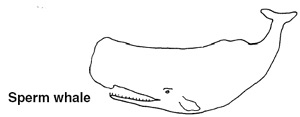
| Glasgow Digital Library | Voyage of the Scotia | BRUCE | PEOPLE | SHIP | ANTARCTIC | INDEX |
|---|
Whaling began in the Arctic and spread to all the oceans of the world. At the end of the 18th century there were 200 British whalers. The peak of northern hemisphere whaling was in 1842 - at that time there were 594 American whalers.
Whaling took on a new lease of life in the mid-19th century, with the typical whaling barque being fitted with an auxiliary engine. The first steam engines fitted to whalers were on Tay from Dundee and Diana from Hull. The first boats fitted with engines in their original plans were Narwhal from Dundee (made of wood) and Empress of India from Peterhead (built of iron plates). The Peterhead boat was not suitable for the Arctic waters and sank in her first year.
Whaling in Arctic waters was a dangerous profession. Despite the sturdy wooden design, many boats were crushed by the ice. In 1830 one French and 19 British boats were crushed in the Arctic ice near Greenland. A thousand men had to survive on the ice until rescued. In the Bering Straits near Alaska 32 American whalers were crushed in 1871 - fortunately all managed to escape in the open whale-catching boats.
The wooden whalers proved ideal for exploration in the Antarctic. The decline of Arctic whaling came at the same time as the need for strong boats for Antarctic exploration
The first factory ship - Admiralen - arrived in the southern oceans in 1906. The development of the steam-powered factory ship and steam-powered whale-catchers began. The catchers were armed with a harpoon gun which now had an explosive warhead.
Grytviken was the largest of the six shore bases to be established on South Georgia. The second most important whaling base was on Deception Island in the South Shetland Islands. Grytviken became a settlement of over 700 people with its own workshops, hospital, cinema, football ground and the then most southerly church in the world (this is now the 'Chapel of the Snows' at the American base on McMurdo Sound in the Antarctic).
The smell of boiling blubber, rotting carcasses, bones and smoke over the settlement was most unpleasant.
Larsen had a well-appointed house with palms inside, a billiard room, a piano, canaries, a portrait of King Haakon and boxes of Havana cigars. He also had a maid (the only such employee in the south).

The experiment of using coal gas for lighting was pioneered by William Burn-Murdoch at Lugar in Ayrshire. The first town to have street lights lit by gas was Catrine, Ayrshire - the second was London where the lamps, which had previously burnt whale oil, were converted to gas.
| Glasgow Digital Library | Voyage of the Scotia | BRUCE | PEOPLE | SHIP | ANTARCTIC | INDEX |
|---|